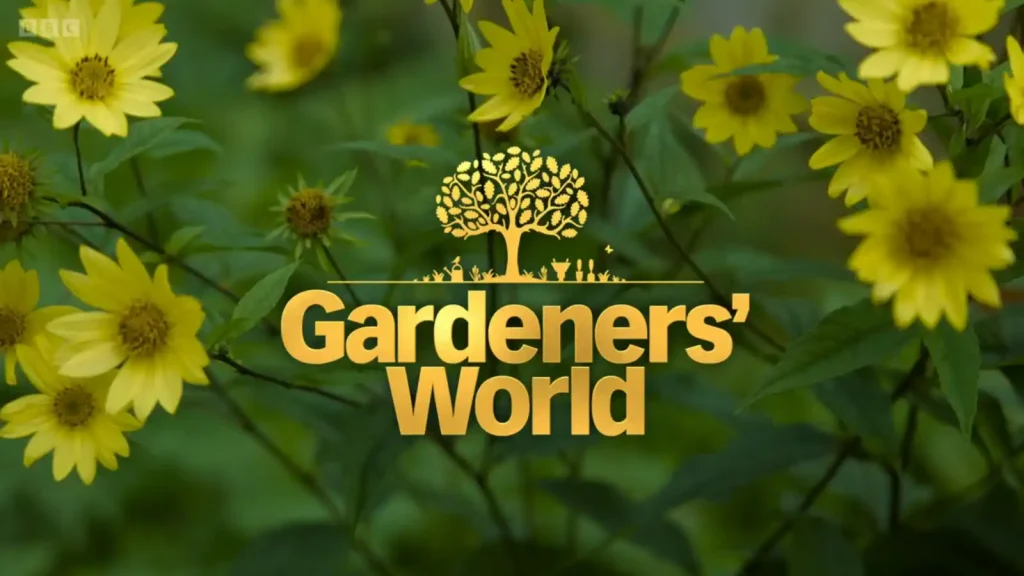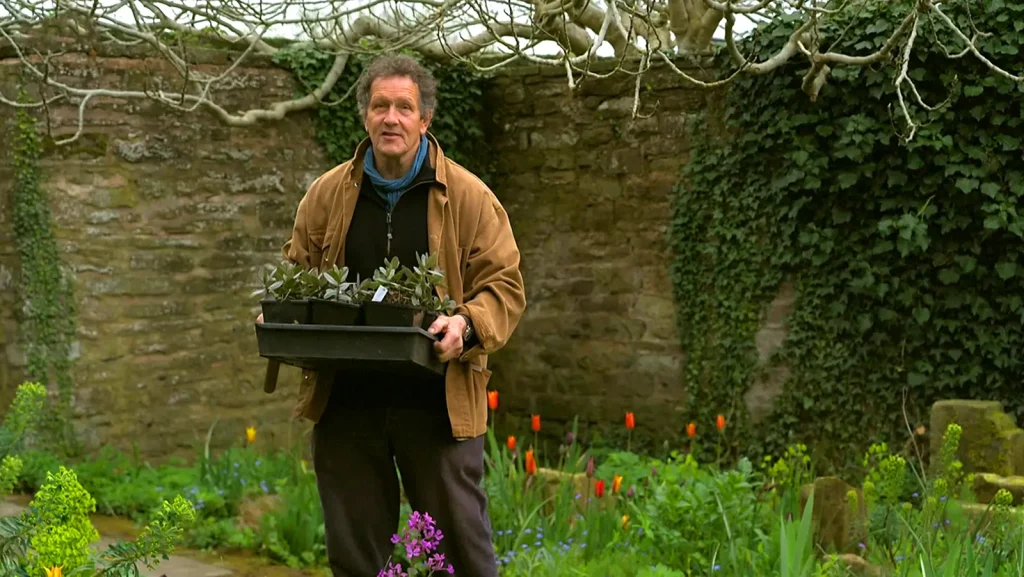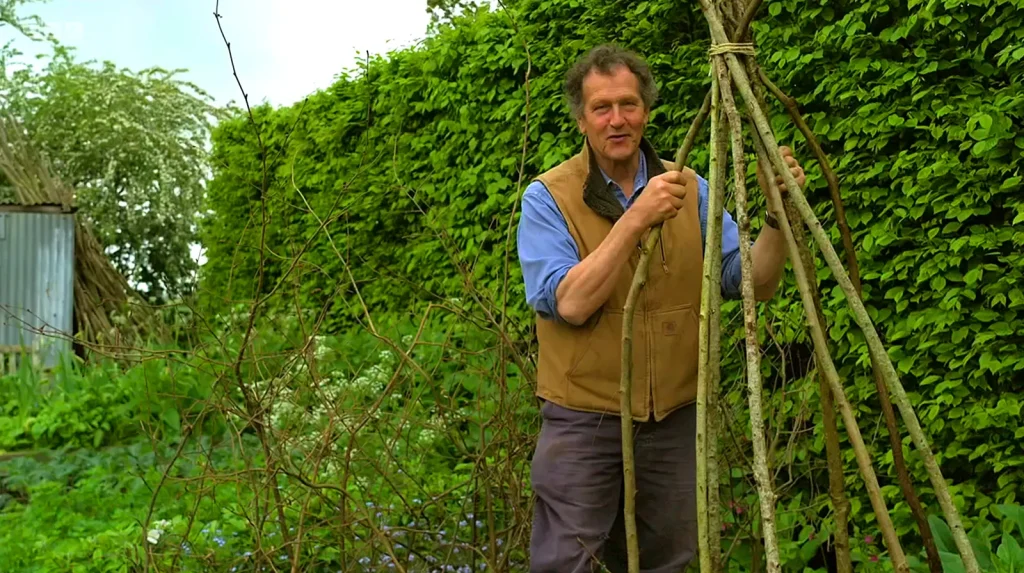Gardeners World 2024 Episode 30: Frances Tophill returns to the stunning backdrop of Powderham Castle in Devon for another insightful episode of Gardeners’ World. This time, she’s focused on putting the final touches on an enchanting new herb garden. The air is thick with anticipation as she prepares the vegetable beds for winter, ensuring they’re ready to burst into life when spring arrives.
By planting tulip bulbs now, Frances sets the stage for a vibrant display of color, ensuring that when the warmer months come, the garden will be a tapestry of blooming beauty. Along the way, she offers invaluable tips for identifying and removing those pesky common garden weeds—because every gardener knows that the battle with weeds is a constant one.
But Frances isn’t the only one with big plans for the garden. Over on the seed-collecting front, Carol Klein is on a mission. She’s passionate about encouraging gardeners to grow plants for free, and her method is as simple as it is rewarding. Collecting seeds from your garden not only saves money, but it also ensures you can nurture plants that are already thriving in your unique conditions.
With her warm, approachable manner, Carol shows how easy it is to gather seeds from your favorite plants and start propagating them for future seasons. It’s an eco-friendly, sustainable approach that every gardener can embrace, whether you’re a seasoned pro or a beginner just getting your hands dirty for the first time.
Meanwhile, Rachel de Thame continues her exploration of the incredible world of flowers. But this time, it’s not just about their beauty—it’s about their hidden superpowers. Flowers aren’t just pretty to look at; they have evolved ingenious ways to attract pollinators, such as bees and butterflies, to ensure their survival. Rachel delves into the fascinating world of pollinating insects, uncovering how flowers use color, scent, and even UV patterns to draw in these vital creatures.
As she walks through vibrant meadows, Rachel’s enthusiasm for these natural relationships is infectious. Her insights inspire even the most casual gardeners to consider how they can make their gardens more pollinator-friendly—because when your garden is buzzing with life, it’s not just more beautiful, it’s healthier too.
And speaking of garden health, this episode also features a deep dive into the hidden universe beneath our feet—literally. A soil expert joins the team to reveal the astonishing diversity of life that thrives in the soil, from microscopic organisms to tiny beasts that play a crucial role in keeping your garden’s ecosystem balanced.
Healthy soil is the foundation of any thriving garden, and understanding what’s going on beneath the surface is key to improving it. The soil expert breaks it down, explaining how these minute creatures help aerate the soil, recycle nutrients, and even protect plants from disease. It’s a reminder that while we often focus on what we can see above ground, the real magic is happening down below.
For anyone looking to get their garden in shape, now’s the time to start planning. Winter may seem like a time for rest, but in reality, it’s the perfect season to lay the groundwork for a flourishing spring. Frances’s tulip bulb planting is a great example of how a little effort now can pay off with stunning results later. If you’re wondering how to prepare your vegetable garden for the colder months, Frances offers practical advice on mulching, covering beds, and rotating crops to ensure your soil stays fertile and your garden remains productive.
As you work through your winter gardening checklist, don’t forget about those troublesome weeds. Weeds are notorious for sneaking in where they’re not wanted, but Frances demonstrates that with a keen eye and a few simple techniques, you can keep them at bay. Whether it’s hand-pulling or using tools like a hoe, staying on top of weed control is essential for giving your plants the best chance to thrive.
Gardeners World 2024 Episode 30
If you’re intrigued by seed collection, Carol Klein has you covered. Seed collecting is more than just a cost-saving measure—it’s a way to connect with your garden on a deeper level. You’re not just growing plants, you’re nurturing life, continuing a cycle that stretches back generations. Whether it’s gathering seeds from colorful flowers or hardy vegetables, Carol’s step-by-step guide makes it easy to get started.
And let’s not forget about the bees, butterflies, and other pollinators. As Rachel de Thame explores the wonders of flower-pollinator interactions, it becomes clear that by planting certain species, you can help support these crucial creatures. Lavender, sunflowers, and wildflowers are just a few examples of plants that attract pollinating insects, making your garden not only a haven for plants but also a sanctuary for wildlife.
To round off this episode, the soil expert’s insights serve as a reminder of the importance of nurturing the foundation of your garden—its soil. From composting to adding organic matter, there are simple steps you can take to improve soil health. It’s a small investment of time that will pay off with stronger, more resilient plants come spring.
In Gardeners World 2024 Episode 30, the message is clear: gardening isn’t just about tending to plants—it’s about cultivating a relationship with the earth. Whether you’re collecting seeds, planting bulbs, or learning about the creatures in your soil, every step brings you closer to creating a garden that not only looks beautiful but also thrives in harmony with nature. So grab your trowel, start planning, and get ready to dig in. The garden of your dreams is just a season away.

How to grow tulips
Tulips, with their vibrant colors and elegant shapes, are the quintessential symbol of spring. Planted as bulbs in the fall, these flowers burst into life when the snow melts, painting gardens in a dazzling array of hues. Whether you plant them in borders, rock gardens, or containers, tulips are a versatile flower that adds a touch of magic to any outdoor space. And while the classic border tulips are a familiar sight in parks and gardens, there’s also a world of specialist tulips that offer something truly unique for garden enthusiasts.
Border Tulips: The Classic Springtime Display
Border tulips are often what come to mind when we think of these iconic flowers. Standing tall on upright stems, their large, vibrant blooms are often found in parks and home gardens, delivering a breathtaking display of seasonal color. Their appeal lies not only in their beauty but also in their variety.
Imagine a garden painted with every shade of the rainbow—white-cream, yellow-orange, blue-purple, red-pink, and even more exotic colors like green and dark black-purple. The sheer diversity doesn’t stop there. Tulips also come in a variety of shapes, each bringing a new layer of charm to the garden. You’ll find single and double-flowered varieties, graceful lily-shaped tulips, and dramatic parrot and fringed forms.
One of the many advantages of tulips is their flexibility in flowering periods. Depending on the cultivar, tulips can bloom from early to late spring, ensuring a steady succession of color before summer flowers take over. This means, with a little planning, you can enjoy a garden full of tulips for months.
Specialist Tulips: A Unique Twist on a Classic
While border tulips dominate many gardens, there’s another group of tulips worth exploring—specialist tulips. These varieties are often smaller in both flower size and height, yet what they lack in stature, they make up for in charm. Closely related to wild species, specialist tulips have a delicate, natural beauty that makes them perfect for gardeners seeking a more refined touch.
One of the great joys of growing specialist tulips is their ability to naturalize in gardens. Over time, they multiply, creating a self-sustaining display of flowers. However, some varieties prefer a bit more shelter, so placing them in a greenhouse or cold frame can help them thrive. Their subtle elegance contrasts beautifully with the boldness of border tulips, creating a dynamic and captivating landscape.
Buying and Planting Tulips: Setting the Stage for Success
When it comes to purchasing tulip bulbs, the timing is key. Most gardeners buy their bulbs in the fall, giving them plenty of time to settle in before winter sets in. Border tulips, in particular, are widely available at nurseries and garden centers, where they’re sold either loose or in labeled packs. When choosing bulbs, look for firm, healthy ones that show no signs of mold. Don’t worry if the papery brown skin on the outside falls off—it won’t affect the flowering.
To achieve a truly breathtaking display, aim to plant about 25 to 50 bulbs per square meter of garden space. This density will create a full, lush look, but if you prefer a more sparse arrangement, fewer bulbs will work too. Just be sure to fill in any gaps with underplanting using forget-me-nots, pansies, wallflowers, or primroses, which will keep your garden looking vibrant.
If you’re planting in containers, a good rule of thumb is to use around 12 bulbs for a pot that’s 45 centimeters wide. However, if you’re after a fuller, more abundant display, you can increase this to 20 bulbs. And if you happen to miss the fall planting season, don’t fret. Many garden centers and supermarkets offer pre-planted tulips in containers during the spring. For the best results, buy these before they’ve fully bloomed so they have time to establish in your garden.
Specialist tulips, on the other hand, can be a bit trickier to find. While some gardening retailers may carry them, you’ll often need to order them online from specialist nurseries. The RHS (Royal Horticultural Society) website offers a helpful “Find a Plant” tool that can connect you with suppliers, ensuring you get the exact variety you’re looking for.
The Enigmatic Rembrandt Tulips
One of the most fascinating types of tulips is the Rembrandt tulip, also known as the English Florist’s tulip. These flowers are famous for their dramatic multicolored streaks and flamed patterns, a look that’s actually caused by the tulip breaking virus (TBV). While this might sound alarming, it’s what gives these tulips their unique appearance.
Unfortunately, Rembrandt tulips are harder to come by these days, but they can still be grown by infecting “breeder” tulips with TBV. If you’re not ready to venture into the world of virus-infected tulips but still love the look, you’re in luck. Varieties like Tulipa ‘Olympic Flame’ offer the same striking appearance without the virus, giving you the best of both worlds.
Creating a Garden Full of Tulips
Choosing the right tulip for your garden can feel overwhelming with so many options available, but it’s also part of the fun. Start by considering where in your garden you want your tulips to bloom. Border tulips thrive in open spaces, adding bold color to garden beds and large containers, while specialist tulips can bring a delicate touch to rock gardens or sheltered corners.
Next, think about the flowering period. Do you want early spring blooms, or are you looking to extend the tulip season well into late spring? By selecting a variety of cultivars, you can ensure a continuous wave of color as different tulips take their turn to shine.
Lastly, consider the flower shape. Whether you prefer the classic cup-shaped tulip, the graceful curves of lily-flowered varieties, or the playful ruffles of parrot tulips, there’s a tulip to suit every taste and garden style.
With a little planning and creativity, tulips can transform your garden into a vibrant, ever-changing landscape that heralds the arrival of spring and leaves a lasting impression well into summer.
Conclusion Gardeners World 2024 Episode 30
As we wrap up, it’s clear that a garden is so much more than just a collection of plants—it’s a living, breathing ecosystem. Whether you’re planting tulip bulbs to bring bursts of color in the spring or carefully tending to your vegetable beds for the winter, every step you take brings you closer to a thriving, healthy garden. Gardening is not just about the visible blooms or the fresh harvests; it’s about nurturing life, both above and below the soil.
By now, you’ve seen how small actions, like collecting seeds or controlling garden weeds, can have a big impact. It’s like a well-choreographed dance between nature and gardener, where each move is essential to maintaining balance. Think of the seeds you gather as a way to pass down stories from one season to the next—connecting you to the rhythms of nature.
And let’s not forget the unsung heroes of the garden—the pollinating insects and the tiny creatures beneath the earth. Without them, the vibrant flowers and healthy plants we love wouldn’t flourish. By attracting pollinators, you’re doing more than just enhancing your garden’s beauty—you’re creating a sanctuary for life. Similarly, taking care of your soil ensures your plants have the strong foundation they need to grow tall and resilient.
As you step back and admire your efforts, remember that gardening is a journey, not a destination. Each season brings new challenges, but also fresh opportunities for growth—just like life itself. Whether you’re a beginner or a seasoned gardener, there’s always more to learn, more to cultivate, and more to enjoy. The key is to stay connected to your garden, listening to what it needs, and responding with care.
So, as you prepare your garden for the next chapter, take pride in the small victories. Each bulb planted, every weed removed, and all the seeds collected are milestones in your gardening story. With each action, you’re laying the groundwork for a future full of beauty, health, and abundance. And isn’t that what makes gardening so magical? It’s where effort meets reward, and nature meets nurture, creating something truly extraordinary right in your own backyard.
FAQ Gardeners World 2024 Episode 30
Q: What is special about this episode of Gardener’s World?
A: In this episode, Frances Tophill graces the beautiful setting of Powderham Castle in Devon. She focuses on completing a new herb garden and prepping the vegetable beds for winter. Furthermore, she provides timely advice on planting tulip bulbs for a vibrant spring display.
Q: Why is Carol Klein collecting seeds in this episode?
A: Carol Klein, with her infectious enthusiasm, demonstrates the simplicity and rewards of seed collecting. Not only is it a cost-effective method, but it also allows you to cultivate plants perfectly suited to your garden’s unique environment.
Q: What can I learn about pollinators in this episode?
A: Rachel de Thame explores the fascinating relationship between flowers and their pollinators. Discover how flowers use color, scent, and even UV patterns to attract essential insects like bees and butterflies. Consequently, you can learn how to make your garden a haven for these vital creatures.
Q: Why does the episode focus on soil?
A: The episode delves into the hidden world beneath our feet – the soil. A soil expert explains the critical role of diverse organisms in maintaining a balanced garden ecosystem. Therefore, you can gain a deeper understanding of how healthy soil contributes to thriving plants.
Q: How can I prepare my vegetable garden for winter?
A: Frances Tophill offers practical advice on preparing your vegetable garden for the colder months. She covers techniques such as mulching, covering beds, and crop rotation. As a result, you can ensure your soil remains fertile and ready for spring planting.
Q: What are some effective ways to control weeds?
A: Weeds are a constant challenge for gardeners. However, Frances demonstrates simple techniques to identify and remove common garden weeds, including hand-pulling and using tools like a hoe. Ultimately, staying on top of weed control gives your plants the best chance to flourish.
Q: How can I attract more pollinators to my garden?
A: Rachel de Thame reveals how planting specific flowers can attract pollinators to your garden. Consider incorporating plants like lavender, sunflowers, and wildflowers. In essence, you can create a sanctuary that supports a thriving ecosystem.
Q: What are the benefits of collecting my own seeds?
A: Seed collecting offers more than just cost savings. It allows you to connect with your garden by nurturing plants adapted to your specific conditions. Moreover, it’s a sustainable practice that promotes biodiversity.
Q: What steps can I take to improve the health of my soil?
A: The soil expert in this episode provides insights into improving soil health. Simple actions like composting and adding organic matter can significantly enhance the soil’s structure and nutrient content. In turn, this leads to stronger, healthier plants.
Q: What is the main takeaway from Gardeners’ World 2024 Episode 30?
A: This episode emphasizes that gardening is about cultivating a relationship with nature. By understanding the interconnectedness of plants, soil, and wildlife, you can create a garden that is not only beautiful but also ecologically balanced. Above all, it encourages viewers to embrace the journey of gardening and enjoy the rewards of connecting with the earth.




